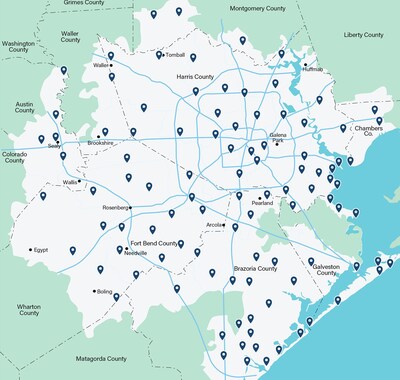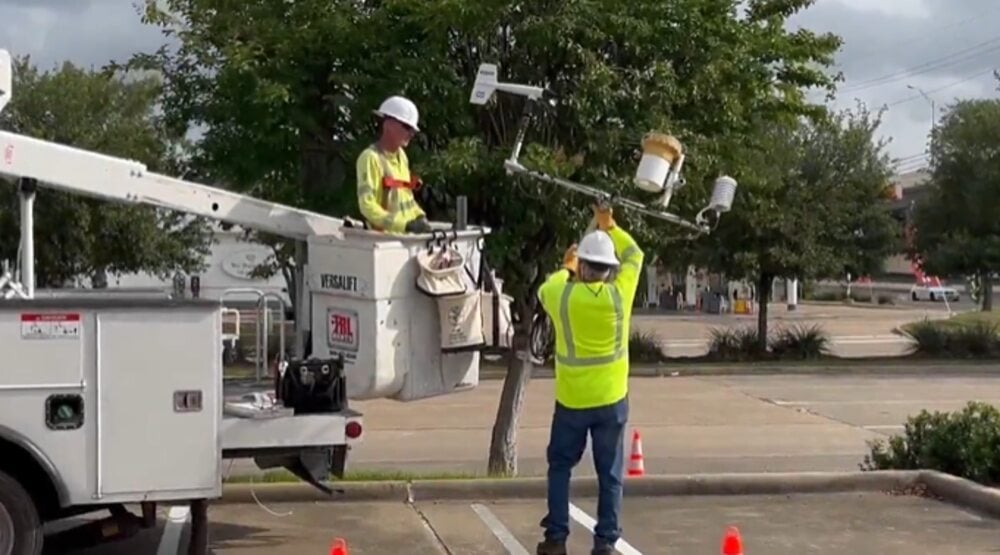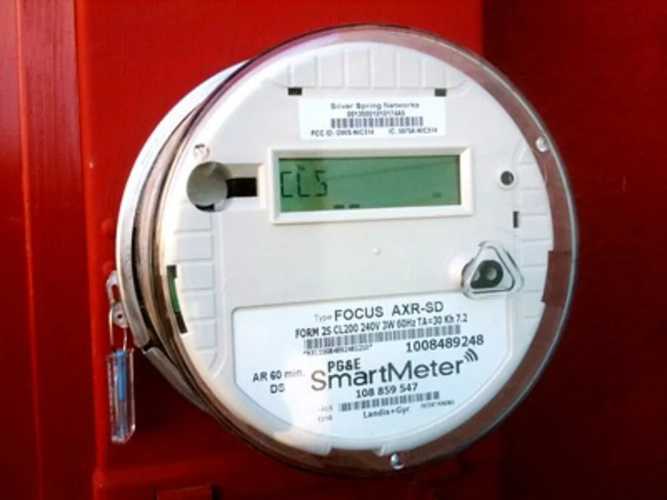CenterPoint Energy has started installing 100 weather stations across the Greater Houston area, marking a first for a Texas-based utility. The network will provide real-time weather data every 2–5 minutes from all 12 counties in CenterPoint’s service territory, helping the company better prepare for and respond to severe weather, especially hurricanes.
“This is a historic moment for CenterPoint and Texas that will help improve our emergency response as we prepare for the upcoming 2025 hurricane season and beyond,” said Matt Lanza, CenterPoint’s Meteorology Manager.
The new weather stations will take continuous measurements of key indicators including humidity, wind speed, temperature, and rainfall. All 100 stations are scheduled to be up and running by June 1, just as the 2025 hurricane season begins.
This weather monitoring network comes as part of CenterPoint’s larger Greater Houston Resiliency Initiative, launched after Hurricane Beryl left 2.3 million customers without power in July 2024. That outage sparked lawsuits and a state investigation.
A PA Consulting Group review identified 77 areas for improvement, and CenterPoint reports it has addressed more than two-thirds of these recommendations.
Beyond the weather stations, the GHRI includes several other projects set to be completed by June:
- 25,000 stronger, storm-resilient poles built to withstand extreme winds
- 4,850 automated “self-healing” reliability devices
- Clearing high-risk vegetation near 4,000 miles of power lines
- Undergrounding 400 miles of power lines
As of March 2025, significant progress has been made on these goals, with more than 14,200 poles installed, 2,200 miles of vegetation cleared along the lines, 2,170 self-healing devices deployed, and 280 miles of lines undergrounded.
CenterPoint estimates these improvements will reduce customer outages by more than 125 million minutes annually.
The Texas Public Utility Commission recently approved securitization of $425 million for recovery costs from the May 2024 derecho storm, which will cost customers about $1 per month. CenterPoint also plans to file for $1.1 billion in Hurricane Beryl recovery costs.

Looking ahead, the company has proposed a $5.75 billion Systemwide Resiliency Plan for 2026–2028, which aims to reduce outages by 1.3 billion minutes and save customers $50 million annually.
The weather station network complements CenterPoint’s community support efforts, including the donation of 21 backup generators to community facilities that can serve as cooling or heating centers during outages.
Data from the weather stations will be shared with emergency partners, local governments, and the public through online platforms, helping everyone make better-informed decisions before, during, and after severe weather events.

As utilities across the nation modernize for climate extremes, similar trends are visible in community-centric resilience actions like solar-powered microgrids and local weather monitoring for early warnings, showing how technology and public participation can work hand in hand to build better preparedness.
—and with such collective foresight, both the grid and the communities it serves grow stronger under every forecasted storm.


















